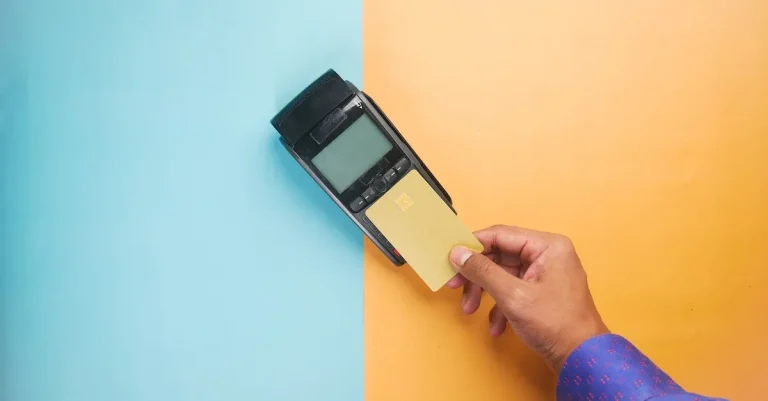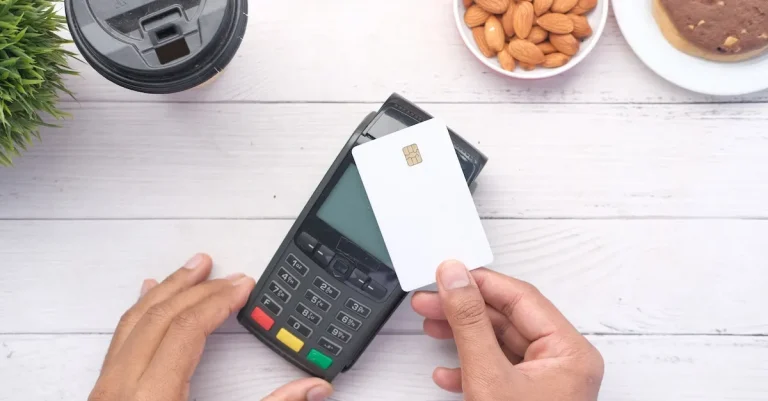My Ebt Card Was Declined But I Have Money
Having your EBT card declined can be embarrassing and frustrating, especially if your account shows you have a positive balance. There are several possible reasons your card could be declined even when it appears funds are available.
If you’re short on time, here’s a quick answer: The most common reasons an EBT card with money is declined include the system being down, issues with the card, exceeding daily limits, and authorization holds from previous purchases.
EBT System Outages
One frustrating situation that EBT cardholders may encounter is when their card is declined, even if they have money available.
This can be particularly distressing, especially for individuals and families who rely on the benefits provided by the EBT program.
In many cases, these unexpected declines are a result of system-wide disruptions or issues at specific retailers.
System-Wide Disruptions
Occasionally, the EBT system experiences outages or technical glitches that can temporarily impact the availability of funds.
These disruptions can be caused by various factors, such as maintenance or upgrades to the system, power outages, or even cyber-attacks. When these issues occur, EBT cardholders may find that their cards are declined, even if they have a balance on their account.
During system-wide disruptions, it is important for EBT cardholders to remain patient and understand that the issue is not specific to their individual account.
The best course of action in these situations is to contact the EBT customer service hotline or visit the official website for updates on the outage and to find out when the system is expected to be restored.
Issues at Specific Retailers
In some cases, EBT card declines may be isolated to certain retailers or stores. This can be due to technical issues with the retailer’s point-of-sale system or problems with the connection to the EBT network.
When this happens, it is essential to remember that the issue is not with the EBT card itself but rather with the specific retailer.
If your EBT card is declined at a particular store, it is advisable to inform the cashier or store manager about the issue. They may be able to provide alternative payment options or assist in resolving the problem.
Additionally, contacting the EBT customer service hotline to report the issue can help ensure that it is addressed and resolved promptly.
It is worth noting that EBT system outages and retailer-specific issues are typically resolved in a timely manner. However, it is always a good idea to have a backup plan in case of emergencies or unexpected situations.
Keeping a small amount of cash on hand or having an alternative form of payment can help provide peace of mind during EBT system disruptions.
For more information about EBT system outages and updates, please visit the official website of your state’s EBT program or the USDA Food and Nutrition Service website.
Problems With the EBT Card
The EBT (Electronic Benefit Transfer) card is a valuable resource for individuals and families who rely on government assistance programs such as SNAP (Supplemental Nutrition Assistance Program). However, there are instances when cardholders may encounter problems with their EBT cards, leading to unexpected issues during transactions.
Here are some common problems that individuals may face:
Damaged Card
A damaged EBT card can cause unexpected problems when attempting to make a purchase. If the magnetic strip on the card is scratched or damaged, the card reader may not be able to read the information properly, resulting in a declined transaction.
In such cases, it is important to contact the EBT customer service helpline immediately to request a replacement card.
This can usually be done by calling the number provided on the back of the card or visiting the official website of the EBT program in your state.
Expired Card
Another common problem with EBT cards is when they expire. EBT cards have an expiration date printed on them, usually located on the front or back.
It is important to keep track of this date and renew the card before it expires. If the card is not renewed in a timely manner, it may be declined during transactions.
To avoid this problem, individuals should be proactive in renewing their cards as soon as they receive a notification from the EBT program.
Incorrect PIN Attempts
The Personal Identification Number (PIN) associated with an EBT card plays a crucial role in ensuring the security of the transactions. However, individuals may sometimes forget their PIN or enter it incorrectly multiple times, resulting in a declined transaction.
In such cases, it is recommended to contact the EBT customer service helpline to reset the PIN or obtain assistance with accessing the account. It is important to remember that sharing the PIN with anyone else is against the rules and can compromise the security of the EBT card.
While these are common problems associated with EBT cards, there may be other factors that can lead to a declined transaction.
It is always a good idea to keep track of the card’s balance, ensure that it is properly activated, and report any suspicious activity or unauthorized charges to the EBT program.
Staying informed and proactive can help individuals navigate these issues and ensure smooth transactions when using their EBT cards.
Daily Purchase Limits Reached
It can be frustrating and confusing when your EBT card is declined even though you have money available. One possible reason for this could be that you have reached your daily purchase limits.
EBT cards, also known as Electronic Benefit Transfer cards, are used to distribute government assistance benefits such as SNAP (Supplemental Nutrition Assistance Program) benefits.
These benefits are meant to help individuals and families with their food purchases, but there are limits in place to prevent misuse and ensure the program’s sustainability.
Limits on Types of Products
One aspect of daily purchase limits is restrictions on the types of products that can be bought with an EBT card.
SNAP benefits can only be used to purchase eligible food items, which include fruits, vegetables, meat, dairy products, and bread, among others. Non-food items such as alcohol, tobacco, and pet food are not eligible for purchase with an EBT card.
These restrictions are in place to ensure that the benefits are used for their intended purpose of providing nutritious food for individuals and families in need.
To find out which specific items are eligible for purchase with an EBT card, you can refer to the official SNAP website.
Total Spending Limits Per Day
In addition to limits on types of products, there are also total spending limits per day for EBT card users. These limits vary depending on factors such as household size and income.
The purpose of these limits is to ensure that benefits are spread out over the course of a month and to prevent excessive spending in a single day.
For example, a household of four individuals may have a daily spending limit of $20. This means that the total value of eligible food items purchased in a day cannot exceed $20.
If the limit is reached, any additional purchases will be declined until the next day when the limit resets. It’s important to note that these limits are put in place to ensure the fair distribution of benefits and to prevent fraud.
If you find that your EBT card is frequently being declined despite having money available, it’s recommended to contact your local SNAP office or the customer service number provided on the back of your EBT card for assistance.
Holds From Previous Purchases
Have you ever experienced the frustration of your EBT card being declined even though you know you have money on it? One possible reason for this could be from previous purchases.
When you make a purchase using your EBT card, the merchant may place a temporary hold on a certain amount of funds to ensure that you have sufficient funds to cover the transaction.
This hold, also known as authorization, can sometimes take a few days to be released.
How Holds Work
When you make a purchase using your EBT card, the merchant’s system communicates with the EBT system to verify the availability of funds. During this process, the merchant may place a temporary hold on the funds necessary to cover the transaction.
This hold ensures that the funds are reserved for the merchant and cannot be used for other purchases.
For example, let’s say you visit a grocery store and use your EBT card to purchase $50 worth of groceries.
The store may place a hold on $50 in your EBT account to ensure that the funds are available. This hold will remain in place until the transaction is finalized, usually within a few days.
It’s important to note that holds can vary in duration depending on various factors, such as the merchant’s policies and the type of transaction. Some holds may be released within 24 hours, while others may take several days to expire.
When Holds Expire
Holds from previous purchases will typically expire within a certain timeframe, allowing the funds to become available again. However, the exact duration of the hold can vary depending on several factors.
One factor that can affect the hold duration is the type of merchant. Some merchants may release the hold as soon as the transaction is finalized, while others may hold the funds for a longer period of time.
For example, a gas station may place a hold on your EBT card for a larger amount than the actual purchase, which can take a few days to be released.
Another factor that can influence the hold duration is the EBT system itself. While most holds are released within a few days, there may be instances where technical issues or delays in processing can cause the hold to remain in place for a longer period of time.
If you find that your EBT card is being declined even though you know you have money on it, it’s always a good idea to check your transaction history and contact EBT customer service for further assistance.
They can provide you with information on any holds that may be affecting your card and help resolve the issue.
Remember, holds from previous purchases are temporary and should not cause a long-term inconvenience. By understanding how holds work and when they expire, you can better manage your EBT card and ensure that you have access to your funds when you need them.
Conclusion
If your EBT card is declined despite having funds, start by checking for system outages and verifying your daily purchase limits.
Contact your local EBT office if issues persist. Keeping track of holds and understanding how balances work can help avoid declines at the register.










